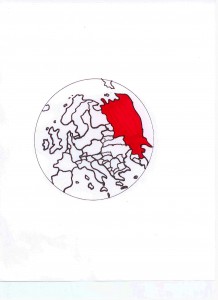RUSSIA
A. THE COUNTRY
The Russian Federation, in Europe, is a semi-presidential republic comprising 83 administrative districts. Russia is the largest country in the world, covering more than a ninth of the Earth’s land area, with the largest reserves of forests, minerals and energy resources. Russia was the leading constituent of the Soviet Union until its dissolution in 1991. In 1957, the Soviet Union launched the Space Age and later Russia was the first country to develop civilian nuclear power and construct a power plant.
B. THE PEOPLE
The 142 million people are very diverse but mainly ~90.6% are Eurasian and ~8% are Turks-Altaic. 160 ethnic groups speak some 100 languages. Russian is the official state language while individual republics have the right to make their native languages co-official. For centuries, Russia was plundered by those who help sway, from Tsars to the Communists to the Oligarchs. Most Russians are still not optimistic. The population peaked just before the breakup of the Soviet Union, subsequently declined with the depression of state and economy, and then increased by 2009. This recovery is due to reduced death rates, increased birth rates and immigration.
C. RELIGION AND CHRISTIANITY/PENTECOSTALISM
95% of Orthodox parishes belong to the registered Russian Orthodox Church and most of those ~100 million adherents do not attend church on a regular basis. The Church is using every possible means to regain its exclusive spiritual dominance. ~67% of the population are in the Christian category, ~20% are non-religious, ~12.5% Muslim, ~0.7% Buddhist, ~0.4% Ethnoreligionist, ~0.2% Jewish. Protestants represent ~1.24% of the population, Independents ~0.8%, Catholics 0.56%, and others are comparatively small in number. Evangelicals represent ~1.2% of the population. Charasmatics represent ~1% and of those, 0.9% are Pentecostals.
Donna Siemens
References:
http://en.wikipedia.org
Operation World, Jason Mandryk. Colorado Springs: Biblica Publishing, 2010.

